Happy Tuesday! Christy Kinahan, an Irish drug kingpin on the FBI’s most wanted list, has left a trail of restaurant, hotel, and grocery store reviews worldwide. Even while on the lam, he wants to let you know that you really should try the lamb.
Quick Hits: Today’s Top Stories
- An airstrike in Damascus, Syria, on Monday reportedly killed three high-ranking Iranian Islamic Revolutionary Guard Corps (IRGC) generals in an attack the Iranian and Syrian governments are attributing to Israel. The strike targeted a building next to the Iranian embassy and also killed four officers in the Quds Force—the IRGC’s espionage and paramilitary wing. Gen. Mohammad Reza Zahedi, one of the generals allegedly killed in the attack, was a U.S.-sanctioned Quds Force commander in charge of operations in Syria and Lebanon, where he led Iran’s engagement with and arming of Hezbollah. Israeli officials have not commented directly on the attack, but Rear Adm. Daniel Hagari, a spokesman for the Israel Defense Forces (IDF), claimed that Israeli intelligence showed the strike did not target a consulate or embassy but rather “a military building of Quds forces disguised as a civilian building.” American officials have reportedly told Iran that Washington had “no involvement” in the attack, as the U.S. and Israel brace for the possibility of Iranian retaliation.
- U.S. and Israeli officials met virtually on Monday to discuss disagreements between the two governments over Israel’s planned ground operation in Rafah, the southernmost city in Gaza. The talks—described in a White House statement as “constructive engagement”—produced an agreement for an in-person meeting with the same group of officials as early as next week. The news comes just days after Israeli Prime Minister Benjamin Netanyahu had canceled plans for an Israeli delegation to visit Washington, D.C., after the United Nations Security Council passed a resolution calling for an immediate ceasefire in Gaza in a vote from which the U.S. abstained. Meanwhile, the IDF said Monday it was investigating reports that an Israeli air strike killed seven aid workers, including several foreign nationals, delivering food aid on behalf of World Central Kitchen (WCK), a humanitarian organization founded by celebrity chef José Andrés.
- An investigation published Sunday by “60 Minutes,” The Insider, and Der Spiegel claimed that Russia’s military intelligence agency is likely behind “Havana Syndrome,” a name given to the mysterious and often debilitating neurological symptoms that have affected hundreds of U.S. government personnel at home and abroad in recent years. The investigative team spoke to individuals who believe they have been affected by the syndrome, investigators, and a retired army lieutenant colonel, Greg Edgreen, who led the Department of Defense’s inquiry into the phenomenon. He assessed that the Russian government had developed an “acoustic weapon” that is allegedly responsible for headaches, dizziness, hearing loss, and other symptoms. A report on the incidents released last March by the Office of the Director of National Intelligence found that it is “very unlikely” a hostile government is responsible for the health episodes.
- In a 6-1 decision handed down Monday, the Florida Supreme Court held that the state’s constitutional privacy provisions do not cover abortion access. The ruling upholds Florida’s previous ban on abortions after 15 weeks and allows a six-week ban that was passed last April to go into effect in 30 days. In a separate, 4-3 decision also released yesterday, the court approved language for a ballot initiative that, if it receives 60 percent support in November, would preserve abortion access in the state until the point of fetal viability—usually at about 24 weeks of gestation—effectively undoing the six-week ban.
- Judge Juan Merchan, who is overseeing former President Donald Trump’s New York criminal trial, on Monday granted a request from Manhattan District Attorney Alvin Bragg to expand a gag order on Trump to include barring the former president from attacking Bragg’s and Merchan’s families. A gag order issued last week ordered Trump not to target witnesses in the case, prosecutors other than Bragg, jurors, court staff, or their families, but after Trump published a series of posts on Truth Social railing against Merchan’s daughter, a Democratic consultant, the judge extended the restriction. “This pattern of attacking family members of presiding jurists and attorneys assigned to his cases serves no legitimate purpose,” Merchan wrote in his ruling.
- Trump posted a $175 million bond in a New York civil fraud case on Monday, pausing the enforcement of a $464 million judgment while he appeals the penalty. The bond was underwritten by a California-based insurance company, though it’s unclear what Trump used as collateral. If Trump fails in his appeal of the ruling, he will be liable for the full judgment amount.
- The NCAA basketball tournaments’ respective Final Fours are set. On the men’s side, Purdue will play North Carolina State and Alabama will face off against the University of Connecticut. In the women’s tournament, North Carolina State will play South Carolina and the University of Connecticut will face off against Iowa.
The Key to the City

One week ago, Baltimore residents awoke to find that the Francis Scott Key Bridge was gone.
Instead of standing watch over the entrance to the port of Baltimore, the “picturesque” steel structure that had spanned the Patapsco River for almost half a century was crumpled in ruins over the deck of the Dali, a container ship that had rammed into one of the pylons supporting the structure around 1:30 a.m. ET on Tuesday.
The disaster—which killed six members of a road crew who had been working on the bridge in the early morning hours—rocked the city of Baltimore and shuttered one of the most active ports on the Eastern seaboard, with serious effects for the people who work there. It’s still unclear how long it will take to rebuild the bridge, how much it will cost, and—crucially—who will pay for it. President Joe Biden—set to visit the site Friday—has promised federal funds to resurrect Key Bridge, but he is already facing pushback from Republicans in what could become a messy partisan fight should congressionally appropriated funds become necessary.
At about 1 a.m. Tuesday morning, the Singaporean-flagged Dali—on a Maersk contract—set out from the Port of Baltimore, headed for the Chesapeake Bay to begin its journey to Sri Lanka. If stood on its end, the Dali would come within eighty feet of the top of the Eiffel Tower—and on Tuesday, it was carrying almost 5,000 shipping containers. Without any cargo, the vessel alone weighs about 95,000 tons.
The ship had been underway for 25 minutes, heading toward the bridge to cruise under it at around 8 knots—about 9 miles per hour, and faster than it sounds. Then, inexplicably, the vessel went dark, halting the engine and freezing the rudder which controls the ship’s direction, leaving the crew of roughly two dozen people scrambling. A backup generator kicked on, restoring the ship’s steering, but not its propulsion. The local pilot aboard—a seasoned veteran familiar with the port—noticed the ship careening to the right toward the bridge pylon and ordered the crew to steer the ship hard to the left. At 1:27 a.m., after the captain had sent out the “mayday” call to the port authorities, the pilot ordered them to drop anchor to try to slow the ship down, but it was too late.
Local police got word that a vessel was in distress and held traffic at either end of the bridge that carries 35,000 cars every day. In under a minute, officers had north- and southbound traffic stopped on I-695. With only seconds to go before the Dali hit the pylon, one officer could be heard on dispatch recordings offering to drive onto the bridge to retrieve the road crew of eight people who were performing repairs. Seconds later: “C13 dispatch, the whole bridge just fell down,” a panicked dispatcher said, sputtering in surprise. “Start, start, whoever, everybody—the whole bridge just collapsed.”
Indeed, within seconds of the Dali’s impact with the pylon on the southern side of the 1.6-mile-long bridge, livestream footage showed the entire structure crumbling as if it were made of popsicle sticks and not steel. Investigators from the National Transportation Safety Board (NTSB) are still trying to determine why the ship—which had undergone routine maintenance just before the collision—lost power, though officials have not shared evidence to suggest the incident was anything other than an accident. As for the bridge, it had “no chance of surviving such an impact,” Nii Attoh-Okine, chair of the University of Maryland’s Civil and Environmental Engineering Department, told TMD.
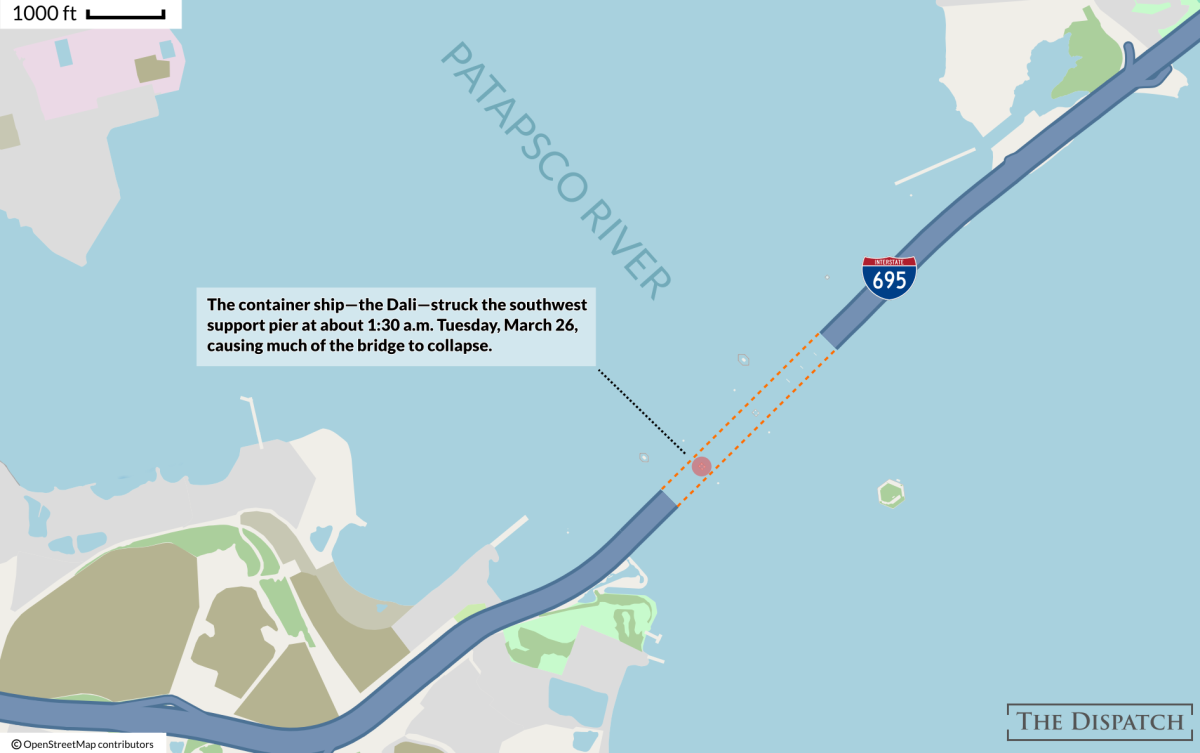
Though those involved seemed to have done everything they could to avert catastrophe, the eight-man work crew—tasked with filling potholes—was still on the bridge when it collapsed. Two men were pulled from the Patapsco River on Tuesday morning unharmed or with minor injuries. But by Tuesday evening, the rescue operation had become a recovery mission. Two bodies were found in a submerged red pickup truck on Wednesday, and the bodies of four others are still missing, though the rescue divers’ search for them cannot continue until the bridge debris has been removed. All of the victims were from Latin America. Maryland Gov. Wes Moore addressed the victims’ families in Spanish on Saturday, saying “You are in our hearts. You are in our thoughts, now and always.”
The work of removing the mangled remains of the bridge—currently acting like a wall in the water, blockading the vast majority of the port of Baltimore—is dangerous. Crews from the Coast Guard and U.S. Army Corps of Engineers, joined by the Maryland Transportation Authority and the state’s Department of the Environment, began the effort on Saturday to extract chunks of steel from the river, using an exothermic cutting torch to detach pieces of the steel supports and lifting them away with cranes floating on barges. In an attempt to reopen even a fraction of the blocked waterway, crews are trying to clear debris to open up alternative routes for small emergency response vessels and essential commercial traffic, particularly through the northern and southern parts of the channel.
Behind the wall of wreckage, work at the Port of Baltimore has ground to a halt. The closest port to the Midwest, Baltimore’s is the primary U.S. port for importing and exporting cars. It’s not yet clear how the port closure will affect U.S. supply chains, if at all, but there are concerns that the rerouting required now may be sticky even when the port reopens. “What ports do best is steal discretionary cargo,” said John Porcari, previously Maryland’s secretary of transportation and most recently President Biden’s port envoy during the COVID-19 supply chain snarls. “Long term, Baltimore may lose some discretionary cargo—and that hurts.”
The port also directly employs some 15,000 people, an estimated 8,000 of whom are currently out of work with ships unable to move in and out. The Maryland State Archives suggests nearly 140,000 jobs are indirectly supported by the port. The Democratic president of Maryland’s state Senate, Bill Ferguson, has moved to establish a relief fund to pay the wages of the affected workers. But with no timeline for when the entire port will once again be open for business, people who work at and around the port are struggling to plan ahead.
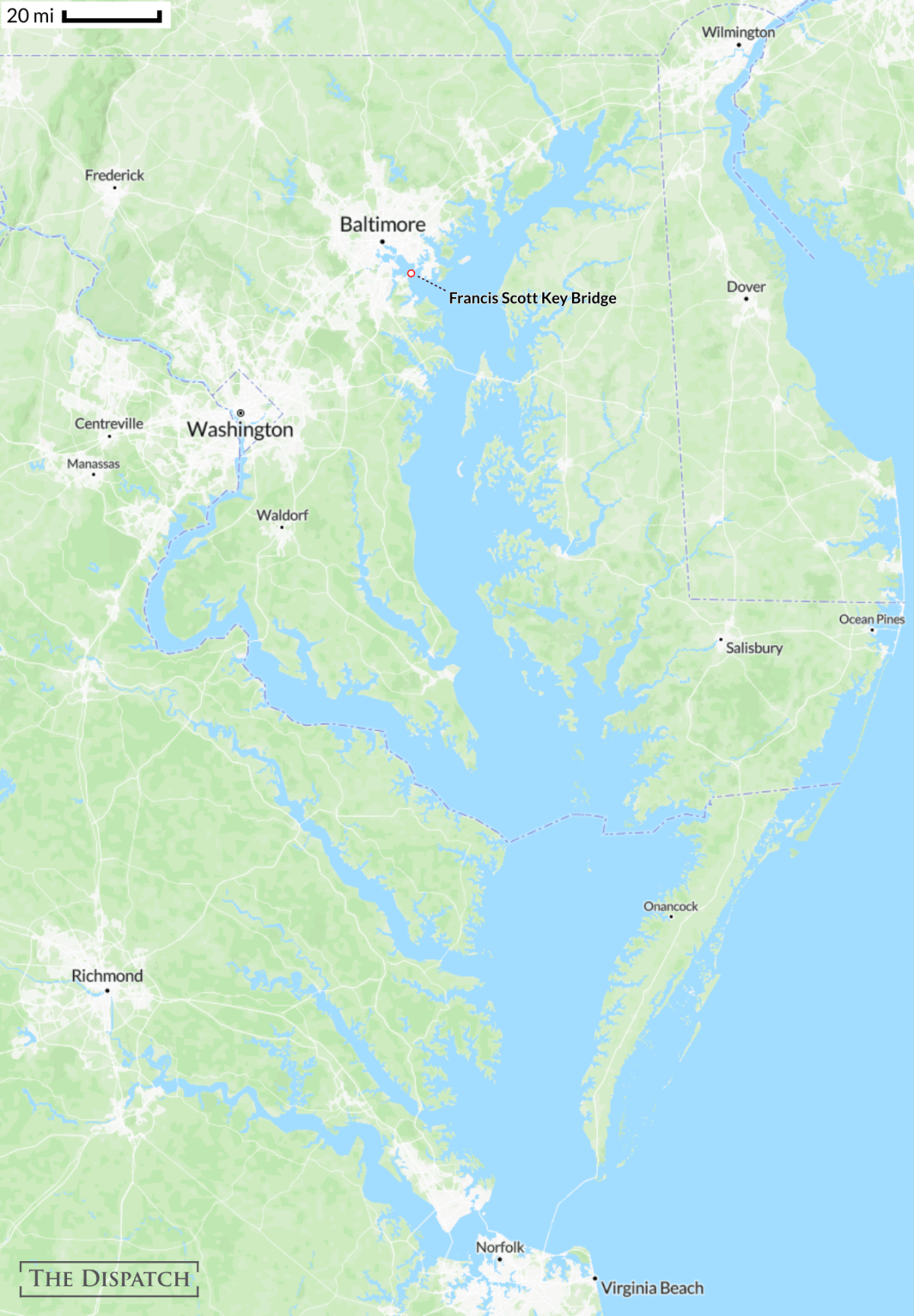
Even as efforts to clear the debris and reopen the port continue, debate is picking up about who is responsible for paying for that work and for eventually rebuilding the bridge. Biden was quick to promise the federal government would cover the full rebuild. “It’s my intention that [the] federal government will pay for the entire cost of reconstructing that bridge, and I expect to—the Congress to support my effort,” he said last Tuesday. The Department of Transportation (DOT) approved $60 million in emergency funding from the Federal Highway Administration (FHWA), but that could be a drop in the bucket compared to some cost estimates which already top $2 billion, according to Roll Call.
There is no official estimate of how much money it will cost to clear up the wreckage nor to rebuild the bridge, though Democratic Sen. Chris Van Hollen of Maryland said Thursday that most of the money would come from the FHWA’s emergency fund. The state government would be on the hook for the last 10 percent of the price tag, but Van Hollen has said he and Sen. Ben Cardin, also a Democrat from Maryland, would be drafting legislation to provide federal funding for the remaining 10 percent.
Though Congress isn’t back from its Easter and Passover recess until next week, some congressional Republicans have already pushed back on the idea of using federal funds to help with the recovery. Rep. Ralph Norman of South Carolina called it “absurd” that federal money would help pay to rebuild the bridge, while Rep. Dan Meuser of Pennsylvania called the plan “outrageous.”
Even a Marylander is skeptical. “It was easy for the president to promise someone else’s money, American taxpayers’ money, but I think American taxpayers would kind of wish that he had the response he had after the East Palestine disaster, which is to call for the companies responsible to pay for the damages,” Rep. Andy Harris, a Republican from Maryland and member of the House Freedom Caucus, said on Friday, referring to the train derailment in Ohio last year.
It’s possible the insurance and transportation companies involved may be made to pay: On Monday, the Singapore-based owner of the ship, Grace Ocean Private Ltd., filed a “limitation of liability” action in federal court, in an effort to invoke an arcane piece of maritime law that could cap the company’s liability at what it claims is the value of the ship and its cargo: $43 million. Treasury Secretary Janet Yellen said last week insurance payouts from the companies involved could be used to pay for repairs, though that process will likely be drawn out.
Previous transportation disasters have been followed by swift bipartisan action, like the collapse of Minnesota’s I-35W bridge over the Mississippi River in 2007 that saw Congress pass $250 million in funding only days later. “The pitch is ‘your district could be next,’” Transportation Secretary Pete Buttigieg said on Sunday, pointing to the 2007 incident. “Also, this has historically been bipartisan.”
Rebuilding, whenever it happens, could present an opportunity to further disaster-proof—as far as possible—this critical infrastructure, said Attoh-Okine, the University of Maryland professor. New technology and high-tech sensors in a new bridge can create what he calls “living infrastructure” to give transportation authorities real-time data about the bridge’s performance and its environment. “We cannot prevent accidents totally,” he told TMD. “The only thing is we have to try to minimize as we can.”
Worth Your Time
- Writing for Foreign Policy, Christina Lu explained the American push to develop deep-sea mining. “As the United States hunts for critical minerals—the materials underpinning vital technologies ranging from electric vehicle batteries to advanced weapons systems—an increasing number of U.S. lawmakers from both major parties are urging the Biden administration to take its search under the sea,” Lu wrote. “The seafloor is home to an untapped bounty of mineral-rich formations that mining proponents are eager to exploit—and soon. It’s a highly controversial idea that has sparked pushback from hundreds of scientists, governments, and big automakers. But the proponents’ arguments have resonated with some lawmakers in Washington, where concerns over China’s critical mineral supply chain dominance are pervasive, and the Biden administration has been desperate to slash U.S. dependence on Beijing.”
- The Vesuvius Challenge, a contest to decode scans of ancient papyrus scrolls buried in a volcanic eruption, offers cash rewards to people who can use machine learning to read scans of the scrolls. Maxwell Tabarrok argued in his Substack Maximum Progress that last year’s impressive results suggest we should rethink science spending. “In the 9 months after the prize was announced, thousands of researchers and students worked on the problem, decades-long technical challenges were solved, and the amount of recovered text increased from one or two splotchy characters to 15 columns of clear text with more than 2000 characters,” he wrote. “The success of the Vesuvius Challenge validates the motivating insight of metascience: It’s not about how much we spend, it’s about how we spend it. Most debate over science funding concerns a topline dollar amount. Should we double the budget of the NIH? Do we spend too much on Alzheimer’s and too little on mRNA? … All of these questions implicitly assume a constant exchange rate between spending on science and scientific progress. The Vesuvius Challenge is an illustration of exactly the opposite.”
Presented Without Comment
Politico: Inside TikTok’s Latest Arguments Against a Ban
As House lawmakers weighed legislation earlier this month that could amount to a ban on TikTok, the conservative political powerhouse Club for Growth had a threat for members: Vote for the bill, and we could dock your score.
The Club for Growth, buoyed by funding from major TikTok parent-company investor Jeff Yass, has become a massively influential player in contested Republican primaries, scoring lawmakers based on how they vote on certain legislation.
Also Presented Without Comment
Wall Street Journal: Person Tests Positive for Bird Flu in Texas After Exposure to Cattle
Toeing the Company Line
- It’s Tuesday, which means Dispatch Live (🔒) returns tonight at 8 p.m. ET/5 p.m. PT! Mary and the team will discuss the news of the week and, of course, take plenty of viewer questions! Keep an eye out for an email later today with information on how to tune in.
- In the newsletters: Kevin argued (🔒) the liberalization of sports betting is exporting Las Vegas’ gambling problems to the rest of the the country.
- On the podcasts: On today’s episode of Advisory Opinions, Sarah and David are joined by three federal judges—Roy Altman, Lee Rudofsky, and Amul Thapar—to discuss their recent trip to Israel and whether the IDF is complying with international law in its war against Hamas.
- On the site today: Chris dives into the Biden administration’s latest word salads, Gregg T. Nunziata argues that the conservative legal movement is at a crossroads, and Peter Gattuso explains the rules on politicians using campaign funds to pay their legal fees.
Let Us Know
Which entity should be responsible for covering the cleanup and repairs of the collapsed Francis Scott Key Bridge?


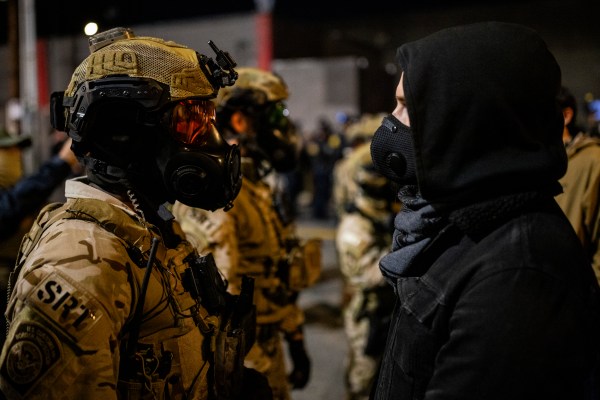


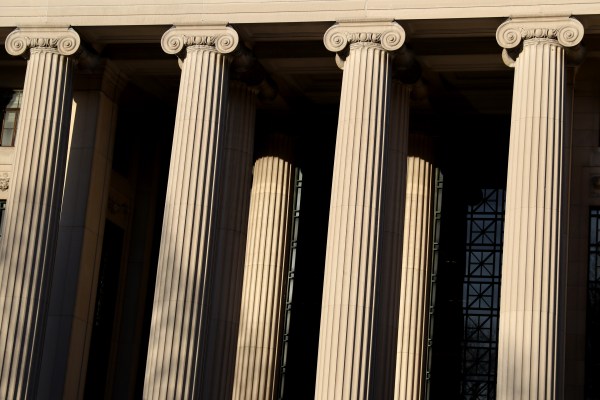
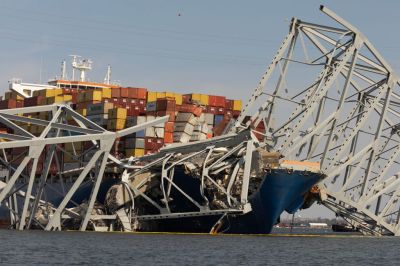
Please note that we at The Dispatch hold ourselves, our work, and our commenters to a higher standard than other places on the internet. We welcome comments that foster genuine debate or discussion—including comments critical of us or our work—but responses that include ad hominem attacks on fellow Dispatch members or are intended to stoke fear and anger may be moderated.
With your membership, you only have the ability to comment on The Morning Dispatch articles. Consider upgrading to join the conversation everywhere.